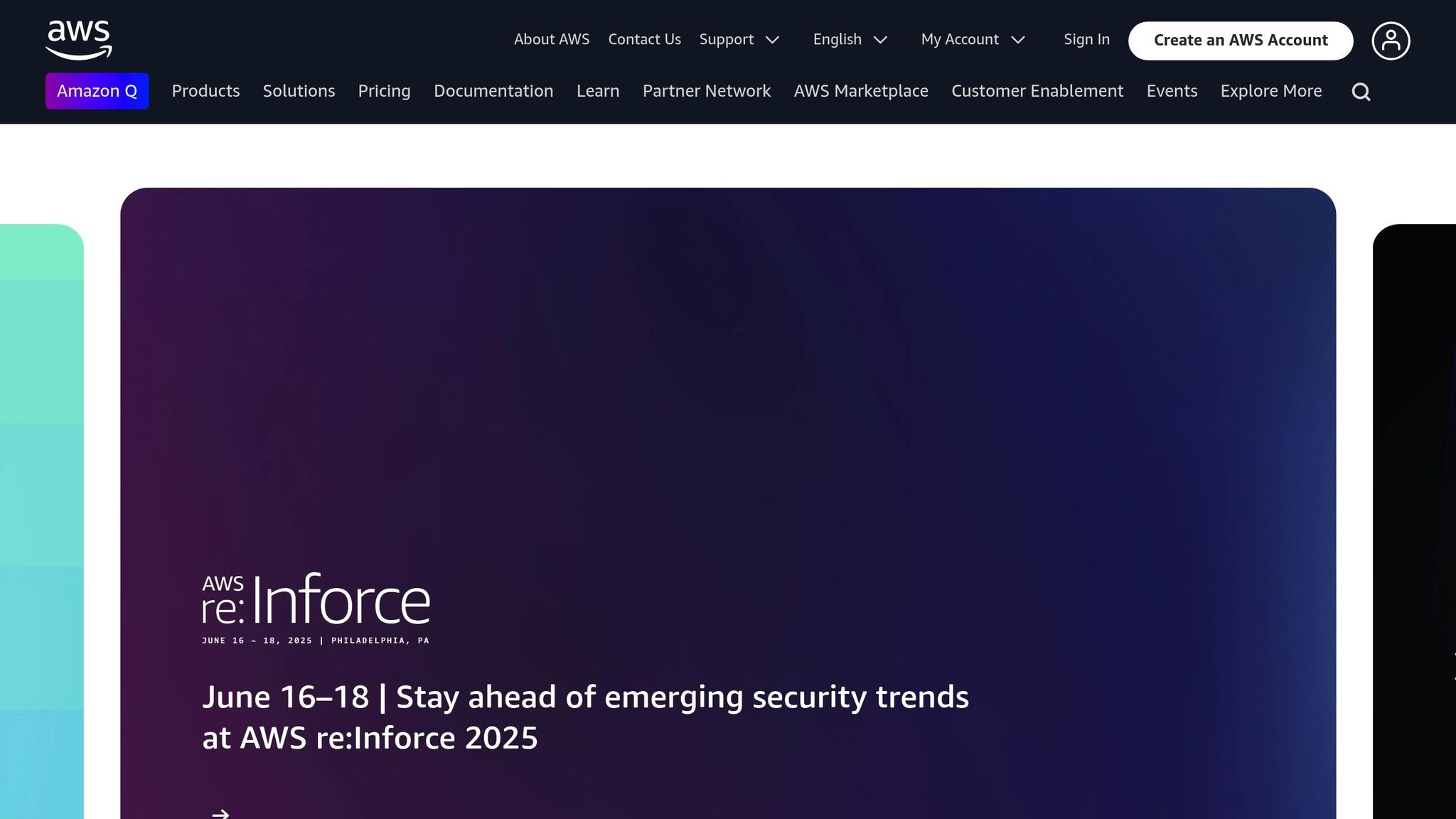AWS cost allocation tags help you track and manage cloud spending by adding key-value metadata to your resources. Here's why tagging matters and how to get started:
-
Why Tagging?
Tags let you track costs by project, department, or environment (e.g., production vs. development). They also improve accountability, optimize resource usage, and simplify chargebacks. -
Types of Tags:
- AWS-Generated Tags: Automatically created by AWS (e.g., CloudFormation stack names).
- Custom Tags: User-defined tags tailored to your needs (e.g.,
Department: Engineering,Environment: prod).
-
Key Tags to Use:
- Department: Links costs to teams (e.g.,
dept-eng). - Project: Tracks spending by initiative (e.g.,
crm-upgrade). - Environment: Separates costs by stage (e.g.,
prod,dev). - Owner: Assigns accountability (e.g.,
owner: email@domain.com).
- Department: Links costs to teams (e.g.,
-
Steps to Implement:
- Define required tags (e.g.,
Environment,Owner). - Apply tags via AWS Console, CLI, or CloudFormation.
- Enforce compliance with AWS Config rules and tag policies.
- Define required tags (e.g.,
-
Best Practices:
- Use consistent tag formats (e.g., lowercase, hyphens).
- Monitor tags regularly using AWS tools.
- Document tag policies and train teams.
Tagging is essential for managing AWS costs effectively. Start tagging today to improve cost visibility, accountability, and financial planning.
Types of AWS Cost Allocation Tags

AWS cost allocation tags fall into two main categories. Understanding these categories helps you manage costs more effectively. Here's a breakdown of each type and how they are used.
AWS-Generated Tags
These tags are automatically created and managed by AWS. They come with a default prefix, "aws:", and provide essential resource identification details. For instance, AWS-generated tags can include the CloudFormation stack name or the AWS service linked to a resource. This makes it easier to track resources and allocate costs automatically. For example, if you're using CloudFormation for deployments, the stack name tag can help you monitor costs by infrastructure stack.
Custom Tags
Custom tags are user-defined and offer flexibility for tracking costs based on your organization's specific needs. Unlike AWS-generated tags, custom tags don't use the "aws:" prefix, allowing you to set up personalized tracking systems. Here are some examples:
| Tag Key | Example Values | Purpose |
|---|---|---|
| Department | Engineering, Marketing, Sales | Track costs by department or team |
| Project | CustomerAPI, DataWarehouse | Monitor spending on specific projects |
| Environment | Production, Staging, Development | Distinguish costs by deployment stage |
Creating a Tag Plan
When it comes to managing your organization's AWS resources, a well-thought-out tagging plan is key to keeping costs under control and ensuring accurate tracking.
Business Requirements
Start by understanding your organization's specific needs for resource management and cost tracking. Focus on three main areas:
- Resource Categories: Identify all the AWS resources you need to track, such as EC2 instances, S3 buckets, RDS databases, and Lambda functions.
- Cost Centers: Define the departments or financial divisions responsible for AWS spending.
- Reporting Needs: Clarify what types of cost reports your stakeholders require and how often they need them.
To organize this, you can use a resource inventory matrix like the one below:
| Resource Type | Required Tags | Optional Tags | Responsible Team |
|---|---|---|---|
| EC2 Instances | Department, Environment | Project, Owner | Infrastructure |
| S3 Buckets | Department, Project | Backup-Policy | Storage |
| RDS Databases | Department, Environment | Backup-Schedule | Database |
| Lambda Functions | Department, Project | Runtime, Owner | Development |
This matrix ensures that everyone knows which tags are mandatory, which are optional, and who is responsible for maintaining them.
Team Coordination
Effective tagging requires collaboration across multiple teams. Here's how different groups can contribute:
- Finance Team: Defines cost allocation strategies and reporting requirements.
- Infrastructure Team: Implements and enforces tagging standards.
- Development Teams: Ensures all deployed resources comply with tagging policies.
- Security Team: Reviews tag access controls and ensures compliance with regulatory requirements.
To keep everyone aligned, schedule regular meetings and maintain a centralized tagging policy document.
Setting Goals
Set clear, measurable objectives for your tagging plan to ensure its success:
- Cost Visibility: Aim for full tagging of new resources within 24 hours. Generate monthly cost reports by department and set up automated alerts for untagged resources.
- Compliance Targets: Strive for 95% compliance with tagging policies, ensure critical resources are always tagged, and conduct monthly reviews to identify gaps.
- Implementation Timeline: Roll out the plan in phases. Start with creating tag templates, provide team training, deploy the tagging framework, and continuously refine the process.
Required Cost Tags
To effectively track and allocate AWS costs, you need specific tags. Below are the key tags recommended for accurate cost management.
Department Tags
These tags help monitor expenses across different business units or divisions. Stick to standardized department codes for clarity:
| Tag Key | Format | Example Values |
|---|---|---|
| department | dept-[code] | dept-eng, dept-sales, dept-mktg |
| cost-center | cc-[number] | cc-1001, cc-2034, cc-3567 |
| business-unit | bu-[code] | bu-retail, bu-b2b, bu-enterprise |
Assign one department tag per resource. For shared resources, use the value shared-services.
Project Tags
Project tags are crucial for tracking costs related to specific initiatives, products, or applications:
| Tag Key | Description | Example Values |
|---|---|---|
| project | Project identifier | crm-upgrade, mobile-app, data-warehouse |
| workload | Application or service | payment-processing, user-auth, analytics |
| initiative | Strategic initiative | q2-2025-launch, compliance-2025 |
Ensure these tags align with your project management system for consistency.
Environment Tags
Environment tags differentiate costs by deployment stage:
| Environment | Tag Value | Usage |
|---|---|---|
| Production | prod | Customer-facing systems |
| Staging | stage | Pre-production testing |
| Development | dev | Active development work |
| Testing | test | QA and testing activities |
| Training | training | Employee training resources |
Add environment tags to separate costs and improve budgeting accuracy.
Resource Owner Tags
These tags assign accountability for resources:
| Tag Key | Format | Purpose |
|---|---|---|
| owner | email@domain.com | Primary resource owner |
| team | team-[name] | Responsible team |
| maintainer | email@domain.com | Secondary contact |
| expiry-date | YYYY-MM-DD | Resource termination date |
The owner tag is especially important for governance and cost control, making it easy to identify who manages a resource.
Best Practices for Tagging
To maximize the effectiveness of your tagging strategy:
- Use AWS Organizations with Service Control Policies (SCPs) to enforce tagging rules.
- Configure AWS Config rules to monitor compliance.
- Set up automated notifications for untagged or improperly tagged resources.
Tag Formatting Tips:
- Use lowercase letters for tag keys.
- Separate words with hyphens.
- Keep tag values consistent across all resources.
- Document allowable values in your tagging policy.
With these tags and practices in place, you'll have a solid foundation for tracking and managing AWS costs effectively.
sbb-itb-6210c22
Tag Implementation Steps
Follow these steps to implement your tagging strategy effectively.
Tag Naming Rules
Use the following conventions to maintain consistent tag naming:
| Rule Type | Convention | Examples |
|---|---|---|
| Case Format | Use lowercase with hyphens | environment-type, cost-center |
| Key Length | Maximum of 128 characters | application-id, business-unit |
| Value Length | Maximum of 256 characters | payment-processing-prod |
| Allowed Characters | Letters, numbers, spaces, +, =, ., /, -, _, @, : | team-alpha, dept-eng@2025 |
Incorporate these rules into your AWS Billing setup to ensure proper tag management.
AWS Billing Setup
To set up tagging in AWS Billing:
- Access the AWS Billing Console and navigate to Cost Allocation Tags. Ensure you have the necessary IAM permissions.
- Select the tags you want to track in your cost reports.
- Wait up to 24 hours for the tag data to populate in billing reports.
- Use Cost Explorer to create custom reports based on department, project, or environment.
Once the billing configuration is complete, apply tags to resources using various deployment methods.
Resource Tagging Methods
Choose the method that best suits your needs:
| Method | Use Case | Implementation |
|---|---|---|
| AWS Console | Manual tagging for individual resources | Directly through the AWS UI |
| AWS CLI | Bulk tagging operations | Use commands like aws ec2 create-tags |
| CloudFormation | Infrastructure as Code (IaC) | Use YAML or JSON templates |
| AWS Organizations | Organization-wide tag policies | Apply through Service Control Policies |
Tag Validation
Ensure your tags remain consistent and compliant by implementing these validation checks:
- Use AWS Config and Organizations tag policies to monitor compliance.
- Set up EventBridge rules to detect resources missing tags.
- Deploy Lambda functions to automate tag verification processes.
Tag Documentation
Maintain comprehensive documentation for your tagging strategy:
| Component | Description | Frequency |
|---|---|---|
| Tag Registry | Complete list of approved tags | Monthly |
| Naming Standards | Detailed formatting rules for tags | Quarterly |
| Automation Scripts | Code for implementing tags | As needed |
| Compliance Reports | Results from tag audits | Weekly |
Store all tag documentation in AWS Systems Manager Parameter Store to ensure team-wide accessibility. This centralized approach helps keep everyone aligned and informed.
Tag Management
Managing tags effectively means regularly monitoring them to ensure resources are tagged correctly. This is essential for accurate cost tracking and maintaining organization. Additionally, it's important to perform regular checks to ensure compliance with established tagging standards.
Tag Compliance Checks
AWS provides several tools to help maintain tagging standards. Tools like Config Rules, Resource Groups, Organizations, and CloudWatch Events enable ongoing monitoring. These tools make it easier to spot and address any deviations from your tagging policies quickly and efficiently.
Conclusion
To wrap up, implementing a well-structured AWS cost allocation tagging strategy is essential for precise cost tracking, streamlined resource management, and accurate billing across teams and projects.
The foundation of success lies in establishing clear tagging guidelines, using consistent naming conventions, regularly monitoring tags with AWS Config rules, and providing continuous training for your team.
Updating your tagging strategy and incorporating new AWS features as they become available ensures your billing remains accurate and uncovers potential savings. This approach helps organizations adapt to changing cloud infrastructure needs while making the most of their resources.
Collaboration between development, operations, and finance teams - combined with AWS monitoring tools - keeps tag compliance on track and delivers actionable insights into costs. As cloud environments expand, proper tag usage becomes an even more critical tool for maintaining cost efficiency and visibility.
FAQs
How can AWS cost allocation tags help track spending and improve resource management?
AWS cost allocation tags are essential for tracking spending and optimizing resource usage across your AWS environment. By applying tags to your resources, you can categorize and organize costs based on projects, teams, environments, or any other criteria relevant to your organization.
These tags enable detailed cost analysis, allowing you to identify areas of unnecessary spending and allocate budgets more effectively. For example, you can quickly identify which projects or teams are driving costs and take action to optimize resource usage. Proper tagging also improves accountability by providing clear visibility into how resources are being utilized and who is responsible for them.
To ensure accurate billing and reporting, it's important to regularly review and maintain your tagging strategy. This includes enforcing consistent naming conventions, auditing unused resources, and updating tags as your infrastructure evolves.
How can teams ensure compliance with AWS tagging policies for accurate cost allocation?
To ensure compliance with AWS tagging policies across teams, it's essential to establish clear guidelines and enforce consistent practices. Start by defining a standardized tagging strategy that includes required tags (e.g., Environment, Project, Owner) and their acceptable values. Clearly document these standards and ensure they are easily accessible to all relevant teams.
Regularly audit your AWS resources to identify missing or incorrect tags. Automated tools, such as AWS Config or custom scripts, can help monitor tagging compliance and notify teams of discrepancies. Additionally, provide training or resources to ensure team members understand the importance of tagging and how to apply tags correctly.
Consistency and automation are key. Use tagging enforcement tools or policies to streamline compliance and reduce manual errors. By maintaining a robust tagging strategy, you can achieve more accurate cost allocation and better resource management.
What AWS tools can I use to automate and monitor resource tagging for accurate cost allocation?
To automate and monitor resource tagging in AWS, you can use AWS Resource Groups Tag Editor and AWS Config. The Tag Editor allows you to manage and apply tags across multiple resources quickly, while AWS Config helps track changes to tags over time and ensures compliance with tagging policies.
For automation, consider using AWS Lambda to create custom scripts for tagging workflows or AWS Organizations to enforce tag policies across accounts. These tools together can help streamline tagging, improve accuracy, and ensure proper cost allocation in your billing reports.


